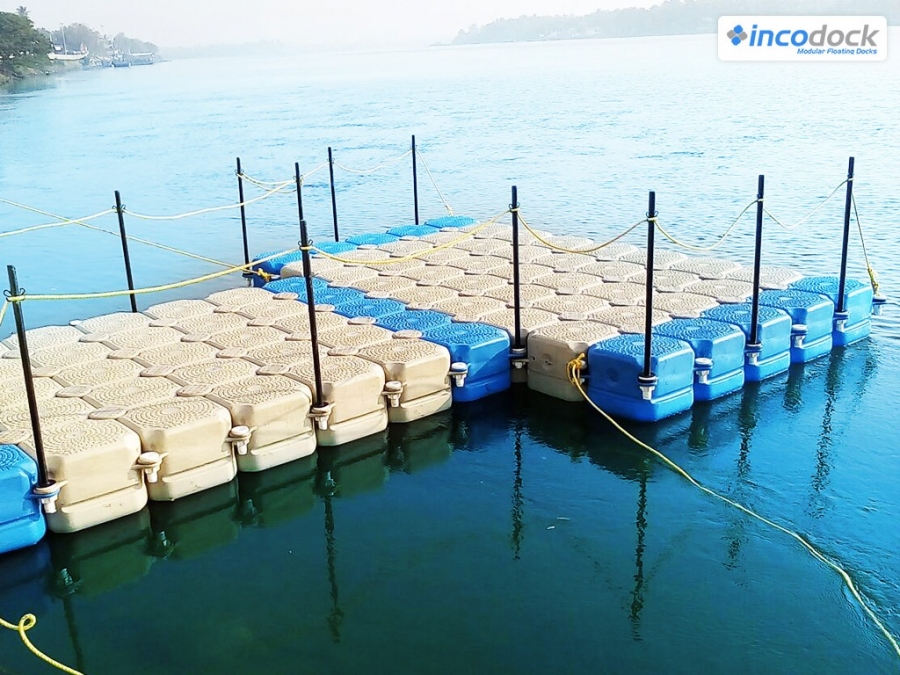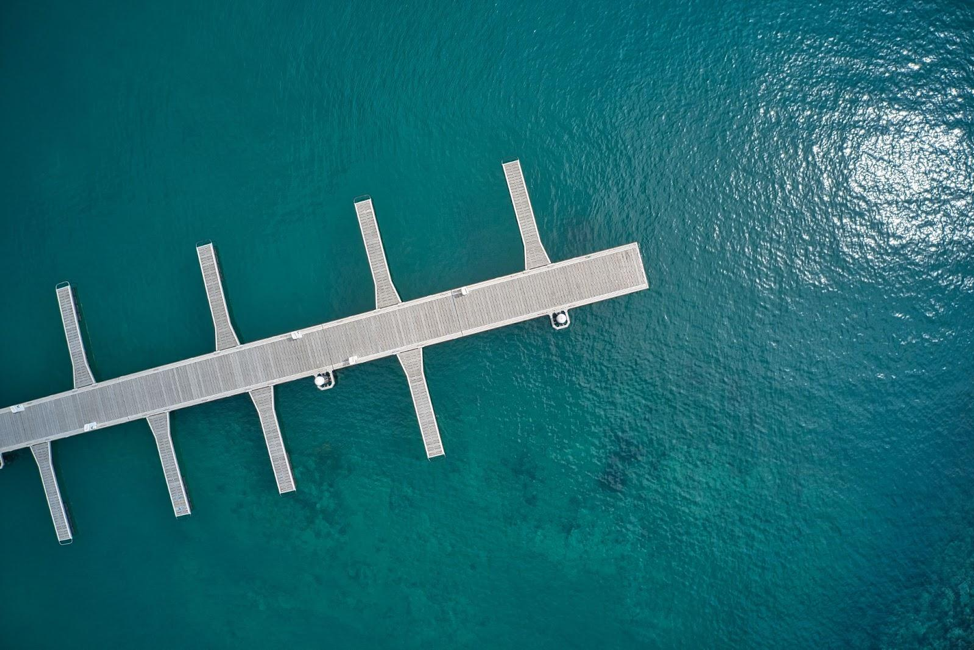Floating Docks: The Smart Choice for Modern Waterfront Living and Recreation
Floating Docks: The Smart Choice for Modern Waterfront Living and Recreation
Blog Article
Create the Perfect Docking Remedy With Floating Docks
Floating docks existing a functional option for a range of maritime requirements, adjusting perfectly to fluctuating water levels and diverse vessel kinds. Their modular nature permits fast installation and moving, yet the selection of proper materials and style functions is essential for making sure both performance and aesthetic appeal. As we explore the essential elements that contribute to the performance of floating docks, a number of key elements regarding security and maintenance will certainly arise, questioning regarding exactly how to maximize your docking experience. The succeeding discussion will illuminate these crucial factors to consider.

Advantages of Floating Docks
Floating docks deal many advantages that make them an ideal selection for various maritime applications. Unlike repaired docks, floating docks surge and fall with the trend, making sure constant access for vessels.
In addition, floating docks are generally much easier and quicker to install compared to typical fixed structures. Their modular design enables uncomplicated setting up and disassembly, facilitating upkeep and moving when essential. This versatility is specifically beneficial for momentary applications or in settings where problems may transform.
Floating docks likewise often tend to be more eco friendly, as they decrease disruption to the seabed and bordering marine communities. Their buoyant nature decreases the threat of damage to marine life, promoting a much healthier setting. Furthermore, these docks can be tailored to accommodate numerous vessel sizes, making certain that they meet particular operational needs - floating dock builder.
Eventually, the mix of adaptability, ease of installment, and ecological considerations makes floating docks a very reliable option for a wide array of maritime requirements.
Selecting the Right Products
Choosing the appropriate products for floating docks is essential to make certain toughness, longevity, and stability. The selection of products straight influences the dock's performance in different environmental conditions, including exposure to water, sunlight, and potential wear from marine web traffic.
Common materials made use of for floating docks consist of aluminum, timber, and high-density polyethylene (HDPE) Aluminum is light-weight, corrosion-resistant, and requires marginal upkeep, making it an excellent choice for long life. However, its initial price can be greater compared to various other products.
Wood, while aesthetically attractive and supplying a typical look, can be vulnerable to rot and insect damages otherwise properly treated. Making use of pressure-treated timber or naturally long lasting species like cedar or redwood can minimize these problems.
HDPE is a preferred selection as a result of its resistance to UV rays and chemicals, together with being environmentally pleasant. floating docks. It is offered and light-weight in different shades, enabling for customization
Ultimately, the right product option will certainly depend on certain demands, including budget plan, wanted aesthetic appeals, and environmental factors to consider. Mindful analysis of these variables will lead to a durable and effective floating dock option.
Style Considerations for Stability
When designing floating docks, ensuring security is an essential facet that can substantially impact their performance and security. Stability in floating dock layout is influenced by different factors, consisting of buoyancy, weight distribution, and the plan of elements.
Weight circulation is critical; evenly dispersing tons throughout the dock prevents turning and boosts security. This can be achieved via critical placement of docking equipment, such as fenders and cleats, in addition to appropriate spacing of drifts. Furthermore, the dimensions of the dock ought to be thoughtfully planned. Larger designs can supply increased security, particularly in harsh water problems, while longer docks might require additional supports to prevent sagging.
Another crucial factor to consider is the official statement environmental effect, consisting of wave action and wind. Integrating attributes such as sidewalls or skirting can aid mitigate the effects of ecological pressures, keeping security in adverse conditions. Inevitably, a combination of thoughtful layout, material option, and understanding of ecological factors will certainly produce a floating dock that fulfills both security and security needs.
Installment Tips and Strategies

Next, safeguard the required authorizations and abide by neighborhood laws, which may determine installation approaches and environmental factors to consider. If required, engage a qualified service provider experienced in floating dock setups. Usage premium materials designed for aquatic environments to improve toughness and long life.
When positioning the dock, align it alongside the coastline to facilitate easy accessibility. Make sure that the anchoring system is robust, using concrete check out here blocks or helical supports to support the dock against wind and wave activity. It's vital to make up seasonal water level variations, consisting of potential ice movement in cooler climates.
Throughout the installation, confirm the dock's floatation and stability before completing the anchoring. Frequently inspect the setup for any type of indications of wear or damage. By following these strategies and suggestions, you can achieve a safe, useful, and cosmetically pleasing floating dock installment that satisfies your demands.
Upkeep and Care Standards
Caring and maintaining for floating docks is essential to prolonging their life expectancy my link and ensuring secure use. Routine inspections ought to be carried out to identify any signs of wear, damages, or marine growth. Seek fractures, loose fittings, or blemished locations on the dock's surface area, as these concerns can compromise structural honesty.
Cleansing is important. Utilize a stress washer to eliminate algae, barnacles, and debris, which can accumulate with time. For persistent growth, think about eco-friendly cleaner that will not harm water life.
In addition, examine the mooring lines and supports regularly to ensure they are safe and secure and cost-free from deterioration. Replace any torn or harmed lines immediately to maintain stability.
Throughout extreme climate, such as tornados or freezing conditions, take precautionary steps. Protect the dock with additional mooring lines and, if practical, remove any type of removable parts to avoid damages.
Verdict
In verdict, the execution of floating docks offers a functional and reliable docking option ideal for numerous maritime applications. Their versatility to rising and fall water degrees, combined with a modular layout, permits very easy personalization and relocation. Choosing suitable materials enhances both toughness and aesthetic allure, while careful factor to consider of security ensures safety and security and durability. With correct installation and regular upkeep, floating docks can offer effective and trusted docking experiences for a large range of vessels.
As we explore the vital components that contribute to the performance of floating docks, numerous key aspects regarding stability and maintenance will certainly arise, raising questions regarding just how to maximize your docking experience. Unlike fixed docks, floating docks increase and loss with the trend, ensuring consistent ease of access for vessels.When creating floating docks, making certain security is a fundamental aspect that can considerably impact their performance and safety and security. Security in floating dock style is affected by different aspects, consisting of buoyancy, weight distribution, and the plan of elements. Eventually, a combination of thoughtful style, material selection, and understanding of environmental factors will generate a drifting dock that fulfills both security and security demands.
Report this page